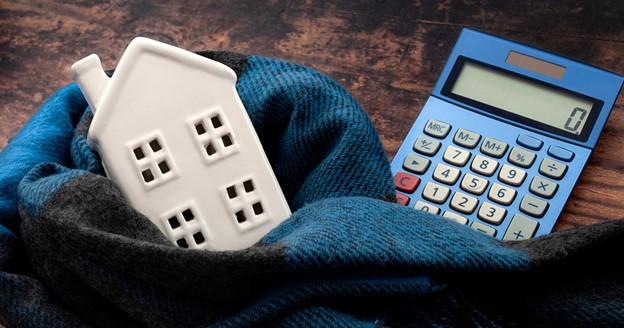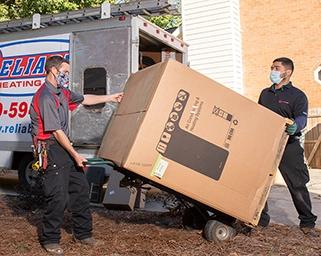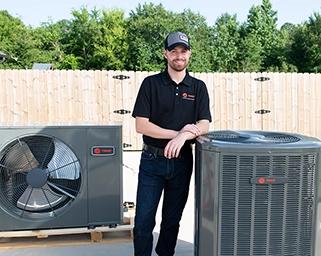12 HVAC Replacement Do’s and Don’ts for the Homeowner
Summary: Doing your homework, getting multiple estimates, being cost-conscious, and hiring the right HVAC contractor can lead to long-lasting comfort.
By Anne Fonda
Replacing a heating and cooling system is something most homeowners will do only once or twice in their lifetimes. If this is your first time, you have a lot to learn. Even if it’s your second time, technology has changed, and prices have risen considerably.
Learn what to do and what not to do to have the best experience.
HVAC Replacement Do’s
1. DO your homework.
It all starts here. While you can rely on an HVAC company to tell you what you need, it pays to have some knowledge about the HVAC systems available, what the best HVAC brands are, what all the HVAC efficiency metrics mean, and more.
As an informed buyer, you can ask the right questions to help ensure you get the best heating and air conditioning system for your home, climate, and budget. Browse our blog and HVAC glossary pages to get started.
2. DO get multiple estimates.
As with any big home improvement, you’ll want to get several estimates to help ensure you get the correct size system, the best price, and quality installation. Not sure where to start? Read our blog on how to find the right HVAC contractor for some tips.
“Selecting the right dealer is just as important as selecting the right system for your home. If you meet a dealer who uses general guidelines for sizing new systems or who simply wants to do a system swap with newer versions of what you have now, it’s time to find a more qualified dealer. Look for dealers who perform load calculations to verify the appropriate sizing for the needs of your home.”
- Chelsea Hudson, Product Manager, Variable Speed Outdoors
3. DO be open to the idea of an electric heat pump system.
Today’s electric heat pumps can effectively heat and cool your home while reducing your carbon footprint if you’re replacing a gas furnace. Visit our Electrification Hub for everything you need to know about the benefits of heat pump systems.
As Jason LeRoy, Director of Advanced Technology, Trane Residential, recently told us in our blog on the electrification of heat, “We in the HVAC industry have made quantum leaps in heat pump technology. It really started about 12 years ago when we commercialized variable-speed, inverter-driven heat pumps.
These systems can boost heating capacity significantly by overspeeding the compressor during low ambient winter conditions. Now it’s going even further with our cold climate heat pump (CCHP), which is in development now.”
“Fundamentally, heat pumps are not a new technology. They’ve been around since the 1950s and 1960s. Trane has always been an industry leader - we made heat pumps reliable in the 70s when the oil crisis made electric heating attractive compared to fossil fuels. We have over 60 years of engineering expertise in making heat pumps a reliable heating and cooling solution.”
– Jason LeRoy, Director of Advanced Technology, Trane Residential
4. DO be aware of the possible need for HVAC duct replacement.
When an HVAC company representative comes to do an estimate, they should listen to you about the heating and cooling problems that you have. They should assess your home for proper system sizing as well as assess the condition of your ductwork.
When you replace an aging, failing HVAC system, you may need to replace at least part of your HVAC ductwork at the same time. Ductwork sealing may also be an option. Over time, a home’s ductwork system deteriorates. If you have damaged or leaky ductwork, a new high-efficiency HVAC system won’t be as efficient as it should.
5. DO ask about scratch and dent models.
Did you know? Much like you can get a discount on a floor model appliance or scratch and dent appliance, some HVAC companies have inventory that got dinged during transport. It works perfectly fine, but may have visible dents or scratches.
You may be able to get either the outdoor unit or the indoor unit at a reduced price. You’ll still need a compatible system, and you’ll still need it installed by a licensed HVAC contractor for the warranty to be valid.

6. DO ask the dealer about financial incentives.
Many of the more energy-efficient heating and cooling units are eligible for tax credits and rebates under the Inflation Reduction Act (IRA) of 2022. Some examples:
- Qualifying heat pumps are eligible for a $2,000 federal tax credit.
- Qualifying heat pumps are eligible for up to $8,000 in rebates, based on your state and your income.
- Qualifying air conditioners are eligible for a $600 tax credit.
- Qualifying furnaces are eligible for a $600 tax credit.
In addition, certain systems may be eligible for manufacturers’ rebates and utility rebates. You can stack HVAC tax credits and rebates to save more. Keep in mind the tax credits are only available for systems installed before December 31, 2025.
7. DO explore HVAC financing.
HVAC system replacement can be expensive, but you should look at it as a long-term investment in your comfort. Explore your HVAC financing options, and choose the one that makes the most sense for you. Be sure to ask if the HVAC company offers 0% financing, like participating Trane dealers do.
8. DO ask dealers to show you the math.
Dealers should be able to clearly share pricing, incentives, and energy savings data with you. Before you hire anyone to complete your HVAC installation, be sure you understand the numbers behind the HVAC replacement cost, how tax credits or rebates will affect the cost, and how future energy savings will impact your budget in the long run.
9. DO register your warranty.
Once HVAC installation is complete, either you or your HVAC installer needs to complete warranty registration within 60 days so you get the benefits of the registered limited warranty. The registered limited warranty period can be up to twice as long as the base limited warranty.

HVAC Replacement Don’ts
Now we get into the things not to do.
1. DON’T make a decision based on HVAC replacement cost alone.
The cheapest way to replace an HVAC system may not necessarily be the best way. Since the average system will last +/- 15 years, your decision will have a long-lasting impact on your comfort and your bank account.
While the upfront cost to replace an HVAC system is a major consideration, long-term energy savings and the reliability of the HVAC brand are also important factors to consider. Think of HVAC system replacement as a long-term investment.
Of course, if you plan to move within a couple of years, that is a consideration too. You wouldn’t want to purchase a premium system that you won’t be around to enjoy.
2. DON’T skimp on the thermostat.
Don’t let HVAC thermostat replacement be an afterthought. Your old thermostat may not work well with your new HVAC system. In many cases, a new thermostat is included in the HVAC system installation cost.
Depending on the system you choose, a smart thermostat may be required, or at least highly recommended. Smart thermostats can help you get the most out of your new system and allow you to control your system from the palm of your hand. They can also save you money.
Read about Trane’s Best Smart Thermostats.
3. DON’T hire the wrong company.
This goes back to our list of things to do. Do your research on each HVAC company you’re considering getting estimates from. Look for positive reviews, number of years in business, licensing, and more. Ask for references. Make sure the HVAC technicians have experience installing the type of system you want.
Make sure they do a load calculation and don’t just quote a system based solely on the square footage of your home. Incorrect sizing can lead to high energy bills and lower efficiency than expected.
Work with the HVAC sustainability experts
Finally, if you’re in the market for an energy-efficient HVAC system that can save you money on your energy bills, be sure to get an estimate from at least one Trane dealer in your area. Trane systems are known for their reliability and energy-saving capabilities. There’s a reason that 78% of homeowners with a Trane system would buy another Trane system when the time for HVAC replacement comes.
Anne Fonda, Content Writer
A Content Writer with Trane Technologies, Anne Fonda researches topics and writes for Trane® and associated residential HVAC brands. She works in collaboration with Trane Technologies subject matter experts, offering easy-to-understand, informative content on complex topics. Her goal is to help consumers make informed decisions on the products and services they need.
She has written for HVAC and other service provider websites for over 16 years. Before transitioning to web content writing, Anne had a 14-year stint as an award-winning journalist. She graduated cum laude from the University of Missouri-Columbia School of Journalism.
When she’s not working, Anne enjoys playing word games, reading, gardening, spending time with family, and visiting gardens and museums.
Expert review by Chelsea Hudson, Product Manager, Ducted Variable Speed Outdoor




